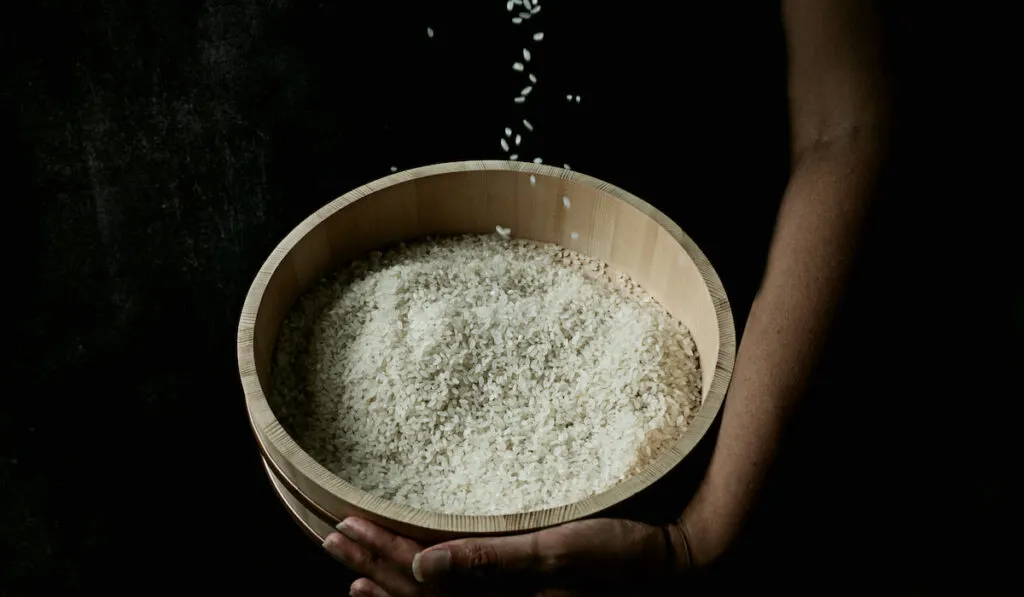Rice has been a staple food in some countries for thousands of years and has become a popular ingredient around the world, including in soups.
If you’ve only ever steamed or boiled rice, or if your soups with rice always go wrong, then this article is for you. Now you can learn how to choose the right variety of rice for soups to give delicious results every time.
While rice can be cooked in soup, some varieties of rice produce a better result than others in terms of texture and resilience. You may get particularly good results with arborio, carnarolli, and other risotto rices, as well as any type of brown rice. Red rice, black rice, and wild rice also work well in some soups.
If you enjoy cooking with rice then carry on reading to learn about cooking rice in soup, the types of rice that work great in soups, and tips for getting the best results.

Table of Contents
Is Rice a Good Soup Ingredient?
Rice can be cooked in most water-based liquids, absorbing the flavors around it. This makes it an ideal ingredient for adding texture and substance to soups.
To get your soups with rice just right, there are some useful facts you should learn which will help you make the right rice cooking decisions.
The structure of rice
Grains of rice are not homogeneous. They have multiple layers, including a hard, inedible outer layer (the chaff) which is removed during processing. Under the chaff lies a fiber-rich layer of bran, and a highly-nutritious layer of germ. At the center is a kernel of starchy endosperm.
White rice is the endosperm layer with all outer layers removed. Removing the chaff but keeping the bran and germ gives us brown rice.
How rice cooks
During cooking a chemical process called gelatinization takes place. This leads to a softening of the rice as starch granules absorb water from the surrounding liquid and lose their crystallinity.
Overcooking rice
If you continue to cook and stir rice after gelatinization, you can cause another process called pasting. This occurs when water-swollen starch granules break up, leaking amylose and other molecules into soup liquid, and making it thicker.
Which types of rice work well in soup?
The type or variety of rice you choose will depend on your recipe and how long the rice will be cooked.
Soups are generally simmered for longer periods and if you choose the wrong rice, or add it too early, you risk overcooking the rice and making the soup very thick and gloopy.
If you’re aiming to make a thinner soup, or you want firmer rice that retains its shape, you need to choose your rice carefully.
1. Brown rice
Brown rice is not a separate rice variety. It can be any type of rice that still has all outer layers protecting the starchy core at the center of the rice kernel.
Brown rice takes longer to cook and will have a firmer and chewier texture, suiting soups that are cooked for longer and where the rice is added earlier in the recipe.

2. Short-grained rice
Risotto rices (e.g. arborio, carnarolli, Viale Nanone), paella rice (e.g. bomba), and sushi rice are all short-grained rice varieties. They’re more rounded in shape and become sticky when cooked while still retaining firmness at the center of the kernel.
They hold their shape better than long-grained white rice varieties when cooked in soup, but not as well as brown rice.
3. Red rice, black rice, wild rice
Like brown rice, red, black, and wild rice still have their fibrous and nutrition-rich outer layers. Again this means they take longer to cook and they can therefore be cooked in soups which take more preparation time.
4. Aromatic rice
Long-grain rices include aromatic rices like basmati and jasmine. While long-grain varieties are not as robust as brown rice or short-grained rice, the scent and flavor of jasmine or basmati rice can still be fragrant and tasty additions to soup.
Make sure they are not added too early or cooked too long.
5. Other rice
Any rice can be a useful addition to a quick and easy soup, including simple American long-grain rice. If using pre-cooked or left-over rice, add it close to the end of cooking to avoid disintegrating the rice and over-thickening the soup.
If not cooked in the soup stock, the rice will have less flavor.

How do I cook rice in soup?
There are just a few easy steps to remember for cooking perfect soup with rice.
Variety: Choose a rice that suits your soup recipe in taste and texture.
Rinse: Rinsing rice thoroughly before cooking will reduce the chances of over-thickening a soup. Swirl and drain the rice in cold water until it looks clear in order to remove all excess starch from the rice grain surface.
Season: rice absorbs the flavors of the liquid around it so make sure you’re cooking it in well-seasoned stock with relevant herbs and spices rather than boiling in water and adding other ingredients later.
Timing: Don’t overcook! Monitor rice cooking progress carefully, testing grains frequently to check readiness. If the soup includes ingredients that must be cooked for a long time (e.g. meat or fish stock from bones), complete the longer cooking stages before adding the rice.
Slow cookers are only useful for cooking soups with rice if you’re aiming to make a congee or other soup with a texture close to rice porridge.
Summary
Rice is a flexible and nutritious cereal that comes in many different colors, sizes, and varieties. Different cuisines and cultures may prepare and cook rice by different methods.
Any rice can be cooked in soup as long as you follow simple guidelines, but some types will work better in certain recipes than others.
Always choose the right variety of rice for your dish, rinse it thoroughly before cooking, and monitor the texture of the rice carefully to avoid overcooking.
